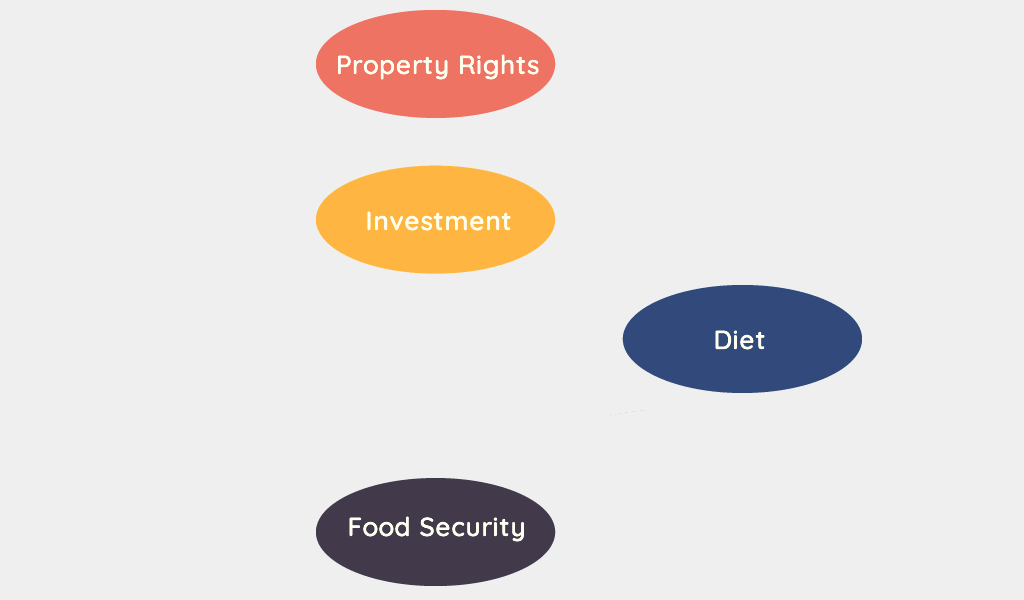We use knowledge visualization techniques and modeling approaches to capture and express knowledge required to address a particular challenge. Identification of all relevant variables and their dependencies is an important first step to decide on the right actions given a specific situation.
For example, many factors affect food security. How do property rights affect food security? Could diet play a role? How do farmers’ investments in their farms affect food security?





